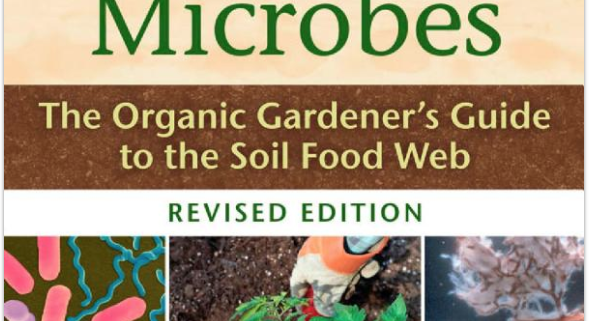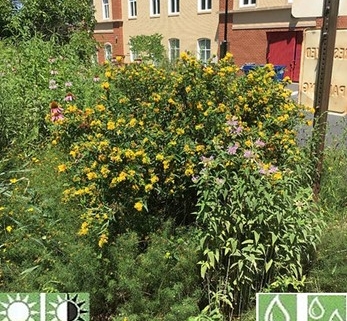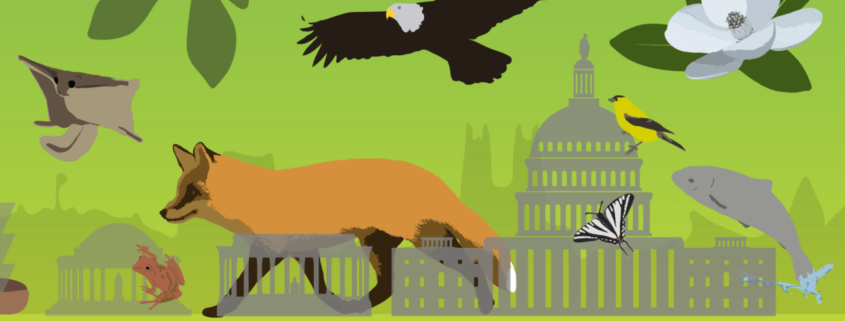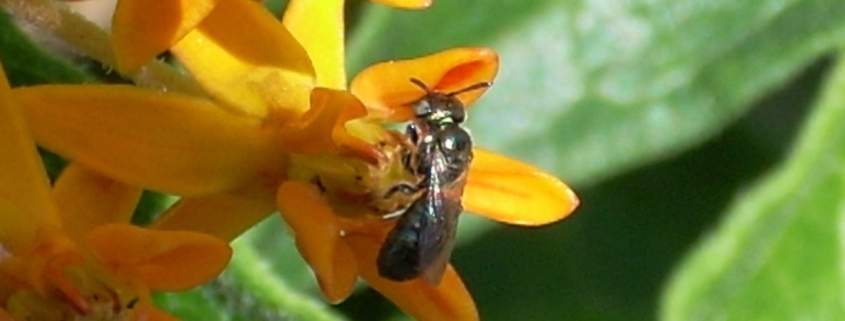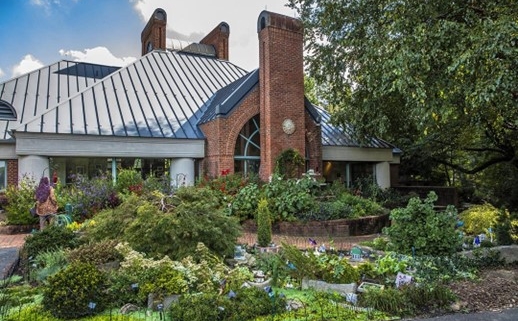Research and Monitoring of Macroinvertebrates
/in Curated Resources, News and Updates/by Janet QuinnFeature photo: The Darrin Fresh Water Institute display. See https://dfwi.rpi.edu/ for more information.
Article and photos by FMN Stephen Tzikas
On October 7, 2022, I had the opportunity to attend the Rensselaer Polytechnic Institute (RPI) Research Showcase in Troy, NY at the Shirley Ann Jackson, Ph.D. Center for Biotechnology and Interdisciplinary Studies (CBIS). It was an opportunity for RPI alumni and guests to experience first-hand the research that shapes and leads innovation on a global scale. I was particularly attracted to the display for the Jefferson Project of the Darrin Fresh Water Institute. The Jefferson Project at Lake George, a collaboration between RPI, IBM Research, and The FUND for Lake George, studies fresh water ecological systems to understand impacts of human activities and how to mitigate those effects. Research being conducted can be found here: https://dfwi.rpi.edu/research/projects
My career has been in environmental engineering and the modeling of resources.
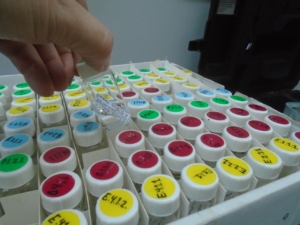
Macroinvertebrate types at the Darrin display being reviewed by the author.
I also volunteer for Fairfax County macroinvertebrate monitoring. Hence, the display was a fascinating convergence of the three topics. While there, an alumna started discussing macroinvertebrate modeling to water parameters. I had not realized the enormous amount of research that was being conducted over the years on macroinvertebrates as it related to their importance for environmental monitoring.
Lake George is a source of clean drinking water, food, and recreation. It has an eco-system of macroinvertebrates. Thus, I had a new context for macroinvertebrate monitoring in Fairfax County. Tiny macroinvertebrates are

Darrin Fresh Water Institute table close-up.
essential for the complex food chain in Lake George. Clams, mussels, snails and some insect larvae consume algae and control its overgrowth. Amphipods and isopods, through their shredding activity (called detritus processing), are essential for recycling nutrients in the lake, and are a source of food for fish. Macroinvertebrates are generally sensitive to pollution, warming of the lake due to climate change, and disturbances from shoreline development. Researchers want to understand what environmental factors determine the spatial distribution of macroinvertebrates, the population dynamics of important species, and how human activity is affecting this ecosystem. This is important given that these species are indicators of water quality.
Researchers use a variety of tools to collect the macroinvertebrates and understand the complex food chain at Lake George. Researchers survey the physics, chemistry, and biology of Lake George and also conduct experiments to investigate how some invasive species of Lake George interact, and how they may be affecting the water quality of the lake.
Those who might be interested in the Northern Virginia Soil and Water Conservation District’s Volunteer Stream Monitoring should review this link:
https://www.fairfaxcounty.gov/soil-water-conservation/volunteer-stream-monitoring
Those interested in reading some recent macroinvertebrate research papers should review these references found on the Internet:
• Sci. Technol. 2019, 53, 10, 6025–6034, Modeling the Sensitivity of Aquatic Macroinvertebrates to Chemicals Using Traits, Van den Berg et al.
• Water, 16 September 2021, Sec. Water and Human Systems, Volume 3 – 2021, https://doi.org/10.3389/frwa.2021.662765 , Benthic Macroinvertebrates as Ecological Indicators: Their Sensitivity to the Water Quality and Human Disturbances in a Tropical River, Tampo et al.
• Journal of Freshwater Ecology, Volume 36, 2021, Development of a predictive model for benthic macroinvertebrates by using environmental variables for the biological assessment of Korean streams, Min and Kong.
Landscaping With A Conscience
/in News and Updates, Success Stories/by Jerry NissleyPhotos courtesy of Steph Johnson
I do not recall ever writing a success story about an FMN volunteer before their training class even graduates but there always seems to be a first time for everything.
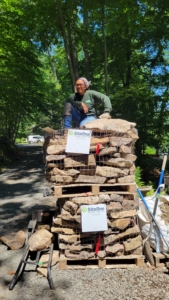 VMN trainee (Fairfax Chapter) Stephanie Johnson was recently featured in a newsletter article published by the Northern Virginia Conservation Trust. Steph is in the current Spring 2023 FMN class and is also a Master Gardener, a member of the Native Plant Society, a small business owner, conservationist, and landscape designer.
VMN trainee (Fairfax Chapter) Stephanie Johnson was recently featured in a newsletter article published by the Northern Virginia Conservation Trust. Steph is in the current Spring 2023 FMN class and is also a Master Gardener, a member of the Native Plant Society, a small business owner, conservationist, and landscape designer.
I know from speaking with her that she has a positive conviction for native landscaping and life in general, so her journey makes for a compelling story. I asked Steph if FMN could publish the link to her story and she replied, “I dont mind. It’s nice when the community unites to support the fight against invasives and the promotion of native habitat. It’s a tough fight solo.”
Want birds and butterflies? Plant native shrubs!
/in Curated Resources, News and Updates/by Mary Ann BushPhoto: Courtesy Plant NOVA Natives/Plant NOVA Trees (Shrubby St. John’s Wort)
This month’s newsletter article to share from Plant NOVA Natives/Plant NOVA Trees
Want birds and butterflies?
Want birds and butterflies? Plant native shrubs! When it comes to the curb appeal of our houses and other buildings, the difference between starkly naked and softly clothed is the shrubs. What is a shrub, anyway? According to famous bird expert David Allen Sibley, “If you can walk under it, it’s a tree; if you have to walk around it, it’s a shrub.” Other than being multi-stemmed and relatively short, a shrub is pretty much the same as a tree and therefore provides the same environmental benefits, albeit to a smaller degree. And the difference between a native shrub and a non-native one is that the former will not only beautify a property but will turn it into a living landscape that supports the butterflies and birds.
Many people are looking at their yards and at public land and realizing that a lot of the space is being wasted. Turf grass has its advantages for certain purposes, such as providing a place to walk or play sports, but as a non-native plant, it does nothing for the ecosystem and requires a lot of input to maintain. Chipping away at the lawn with native shrubs can quickly cover the ground at a very low cost. Beyond the initial watering to get them established, they will require little or no maintenance from then on.
For small spaces, there are some native shrubs that naturally stay short, such as Shrubby Saint John’s Wort (Hypericum prolificum) with its bright yellow flowers. There are also smaller cultivars of larger shrubs, such as Winterberry Holly (Ilex verticillata) with its red berries that persist into January until they finally soften up and become a food source for hungry birds. If you use shrubs whose ultimate height fits the space you have in mind, the yearly shearing task will be eliminated. These and many other native shrubs are described on the Plant NOVA Natives website, which also points to places to buy them.
Some native shrubs grow tall enough to provide shade and can be an alternative to a small flowering tree. Common Witch-hazel is an example of that. The twigs have been used for divining rods, and the leaves get cute bumps in the shape of a witch’s hat. This native shrub is also magical for the flowers that are revealed in November after the leaves have fallen off. Those bumps, by the way, are caused by the reaction of the plant to a chemical injected by a tiny insect, the Witch-hazel Cone Gall Aphid. The cone-shaped bumps provide food and shelter to the female aphids as they lay their eggs.
Native shrubs can fill in the spaces between trees. From an environmental perspective, this arrangement is ideal, providing shelter and food at multiple heights, something we have lost in many of our woods to excessive browsing by deer. (In fact, although “Nature’s first green is gold,” if you look into the woods of Northern Virginia right now, there is a suspicious amount of green, much of which is due to invasive species such as Multiflora Rose and Asian Bush Honeysuckle. The leaves of invasive plants often emerge earlier and persist later than those of our native shrubs.) In our own yards, we can take steps to protect plants from deer and to swap out invasive shrubs for native ones and thus help support our local ecosystem.
The Virginia Department of Forestry (VDOF) is collecting data on how many trees are planted in Northern Virginia as it works toward the goal of 600,000 by 2025. For this purpose, shrubs count as trees, so VDOF is encouraging everyone to report plantings of both. A reporting form can be found on the Plant NOVA Trees website.
Loudoun Wildlife Conservancy Native Plant Sale, April 22nd
/in Events, News and Updates/by Mary Ann BushPhoto: Courtesy of the Loudoun Wildlife Conservancy
Saturday, April 22, 2023
9:00am – 3:00pm
Main Visitor Parking Lot at Morven Park
17195 Southern Planter Ln
Leesburg, VA 20176
It’s (always) time to go native!
Native plants add beauty and interest to your garden all year long and provide important habitat for wildlife. Loudoun Wildlife Conservancy’s Native Plant Sale is the place to buy spring-blooming flowers, vines, trees, shrubs and ferns from four local native plant nurseries. The sale will be staffed by volunteers knowledgeable about native plants who can advise you on selecting natives for your garden.
In addition to selling plants, the Sale provides an opportunity to learn about some of Loudoun Wildlife Conservancy’s programs. Our Wild Shop will be there with books, T shirts, mugs and other merchandise for sale. Community partners—including the Banshee Reeks Chapter of Virginia Master Naturalists and Loudoun County Master Gardeners—will have booths at the sale, as well. We’ll also have TLC, a fertilizer and deer deterrent, to give away.
Find more information about the LWC Native Plant Sate at: https://loudounwildlife.org/event/spring-native-plant-sale/
CITY NATURE CHALLENGE WASHINGTON DC METRO AREA, April 28th – May1st
/in Events, News and Updates, Volunteer Opportunities/by Mary Ann BushLogo: Courtesy of the CITY NATURE CHALLENGE WASHINGTON DC METRO AREA
WELCOME TO CITY NATURE CHALLENGE 2023!
Friday April 28 – Monday May 1, 2023
Do you like observing nature? Make your observations count! The City Nature Challenge is an adventure in metropolitan areas worldwide to discover and identify wildlife. You will be looking for signs of life in parks, neighborhoods, and backyards to see what plants and animals share our environment. Join the City Nature Challenge and become a citizen scientist!
Everyone in the Washington DC metropolitan area with access to a camera and the internet can observe wildlife for the Challenge. Anyone worldwide can help with identifying your finds!
Please review this helpful Resource Sheet on the 2023 CNC for important resources and events!
Where: DC Metro Area City Nature Challenge – Area inside the bright green line on this map.
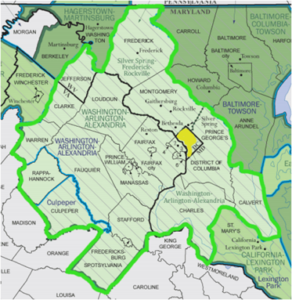
DC Metro Area City Nature Challenge – Area inside the bright green line on this map.
Drawing and Learning about Fossils at Hidden Oaks Nature Center, May 6th, 13th and 20th
/in Learning Opportunities, News and Updates/by Mary Ann BushPhoto: Courtesy of the Virginia Department of Conservation and Recreation
May 6, 13 and 20, 2023
9:30-11:30AM
Cost: $60.00 Sign-up through Fairfax County Park Authority
Class Code: L8Q.EJQH
HIDDEN OAKS NATURE CENTER LOCATION
7701 Royce Street
Annandale, VA, 22003
Sign-up through Fairfax County Park Authority Class Code: L8Q.EJQH
Fossils are fascinating!! Delve into the ancient world of plant, marine and dinosaur fossils by drawing fossils from the Hidden Oaks collection. Learn how fossils form, go on a prehistoric-themed hike and try matching fossils to their ancient animal or plant. Your choice of ink pen, colored pencil, or watercolor can be used.
Drawing and Learning about Native Bees at Hidden Oaks Nature Center, April 15th and 22nd
/in Learning Opportunities, News and Updates/by Mary Ann BushPhoto: Courtesy of the Fairfax County Government
Saturday, April 15 and 22, 2023
9:30-11:30AM
Cost: $40.00 Sign-up through Fairfax County Park Authority
Class Code: LUT.90ZC
HIDDEN OAKS NATURE CENTER LOCATION
7701 Royce Street
Annandale, VA, 22003
Sign-up through Fairfax County Park Authority Class Code: LUT.90ZC
Get to know your local, helpful, native bees!! Program includes natural history information, drawing tips, local bee identification, field sketching and walks to search for bees.
Meadowlark Botanical Gardens needs our help!
/in News and Updates, Volunteer Opportunities/by Mary Ann BushPhoto: Courtesy of MEADOWLARK BOTANICAL GARDENS
Address: Meadowlark Botanical Gardens
9750 Meadowlark Gardens Ct,
Vienna VA 22182
Meadowlark Botanical Gardens need people to help with the native plant garden.
Just bring a willingness to participate and learn! They have volunteers ranging from little to no experience in gardening to former professionals. There is no expectation or requirement on hours, but they hope to have volunteers participate at least once or twice a month for a few hours. Many volunteers come once a week in a very regular fashion.
In many cases there is a fear that they do not know enough to begin assisting at the gardens and that is simply not the case. Their team is here to help all volunteers get more comfortable working in the gardens.
You can find the online information as well as the inquiry form here.
If you are interested in more of a single, group day approach, that will require a bit of coordination with the lead horticulturist, Charlies Bruce, to coordinate the details of the day/time. If that is something you are more interested in then they can connect you with Charlie soon!
Thanks,
Jeff Hill
(703)-255-3631 ext. 102
Fairfax County Spring Watershed Cleanup 2023, March – April – May
/in News and Updates, Volunteer Opportunities/by Mary Ann BushPhoto courtesy The Nature Conservancy
Registration for the annual Fairfax County Spring Watershed Cleanup in partnership with The Nature Conservancy and Fairfax County Park Authority is now available at www.nature.org/fairfaxcleanup. This year’s cleanup will take place over several dates at 15 Fairfax County Park locations. An estimated 600 volunteers are needed to help clean up plastic bottles, cans and other debris!
Event capacity is limited. Please follow instructions about registering groups in the detail section of the registration pages via Eventbrite. (specific Eventbrite links for each event below. Click on the event to be taken to the registration page).
You can view park locations, dates, times, and number of volunteers needed here.
Saturday, March 25, 9:00 – 11:30 a.m.
- Cub Run Rec Center (FULL)
- Cub Run Stream Valley (London Towne)—Centreville, VA
- Sully Station I—Centreville, VA
- Sully Station II—Centreville, VA
- Isaac Walton Park—Centreville, VA
- Virginia Run—Centreville, VA
- Chalet Woods Park—Centreville, VA
Saturday, March 25, 9:00 a.m. – 12:00 p.m.
- Hidden Pond Nature Center—Springfield, VA
Sunday, April 9, 9:00 a.m. – 12:00 p.m.
- Lake Accotink Park—Springfield, VA
Sunday, April 23, 9:30 – 11:30 a.m.
- Olander and Margaret Banks Park –Alexandria, VA
Saturday, April 29
- Scott’s Run Nature Preserve—9:00 – 11:00 a.m. (FULL)
- Arrowbrook Wetlands Park—9:30 – 11:30 a.m.—Herndon, VA
- Merrybrook Stream Valley Park—10:00 a.m. – 12:00 p.m.—Herndon, VA
Friday, May 5, 9:30 – 11:00 a.m.
- Providence Rec Center—Falls Church, VA
Sunday, May 7, 9:00 – 11:00 a.m.
- Burke Lake Park (FULL)
A confirmation email with additional details will be sent to registered volunteers about 3-5 days before the scheduled cleanup. If you have questions between now and then, please let me know.
If the sites reach capacity, we encourage you to find additional opportunities to volunteer and connect with nature at
Please feel free to pass along to other organizations, friends and family!
Kindest regards,
Lindsey Hosier
Stewardship and Volunteer Program Assistant
[email protected]
765-717-3755 (mobile, text available)
434-951-0572 (office)

The Nature Conservancy
Virginia Field Office
652 Peter Jefferson Parkway
Suite 190
Charlottesville, VA 22911
nature.org


